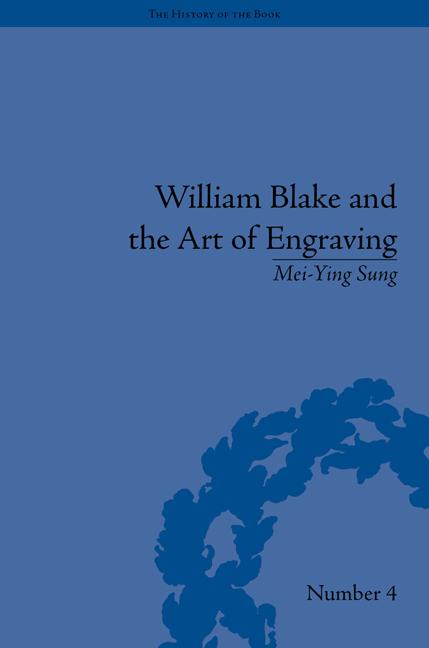Book contents
- Frontmatter
- CONTENTS
- Abbreviation
- List of Figures
- Acknowledgements
- Introduction
- 1 The History of the Theory of Conception and Execution
- 2 The Evidence of Copper Plates
- 3 Blake's Engraved Copper Plates
- 4 Copper Plate Makers in Blake's Time
- 5 Blake's Virgil Woodcuts and the Earliest Re-Engravers
- Conclusion
- Notes
- Works Cited
- Index
4 - Copper Plate Makers in Blake's Time
- Frontmatter
- CONTENTS
- Abbreviation
- List of Figures
- Acknowledgements
- Introduction
- 1 The History of the Theory of Conception and Execution
- 2 The Evidence of Copper Plates
- 3 Blake's Engraved Copper Plates
- 4 Copper Plate Makers in Blake's Time
- 5 Blake's Virgil Woodcuts and the Earliest Re-Engravers
- Conclusion
- Notes
- Works Cited
- Index
Summary
One of the most important sources for studying printing copper plates can be derived from the names and addresses of the copper plate makers stamped on the versos of the plates. As suppliers of tools and materials for engravers, copper plate makers provided the most basic material foundation for their work and played a crucial role in book trade and printmaking circles in the era of hand made reproduction. However, they have rarely been seen as significant to scholarly study and little research can be found. This chapter gathers information from the evidence shown on the extant printing plates in some major collections as well as from trade directories, and introduces the main copper plate makers working in London during Blake's life time. It shows that, far from being an isolated visionary artist, he was very much a part of a changing economy of opportunity and capital comprising the central London book and print trade at this time.
Copper plates do not always bear the plate maker's marks. This is because copper plates were made in large sheets, and subsequently cut into small pieces according to the needs of engravers. This results in some plates bearing no plate maker's mark or only a fragment of one. On the other hand, some large copper plates bear more than one plate mark stamped on by the plate maker. Blake's large copper plate for The Beggar's Opera (457×585 mm) at the Houghton Library bears three marks on its verso, showing JONES NO 4[7] | SHOE LANE LONDON on the upper right, centre and lower left of the copper, aligned diagonally. These marks stamped on the verso of the copper plates are often fragmentary due to the way in which the copper plate has been cut and sometimes unclear due to the uneven impact of stamping. However, they contain significant information about the plate makers, and most importantly different wording and styles are useful for identifying the period when the plate was made.
- Type
- Chapter
- Information
- William Blake and the Art of Engraving , pp. 119 - 140Publisher: Pickering & ChattoFirst published in: 2014



